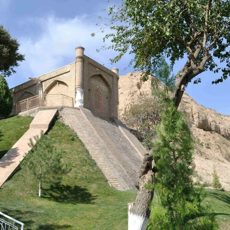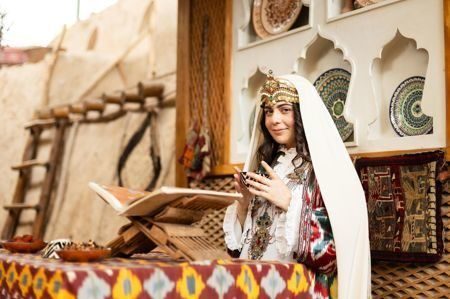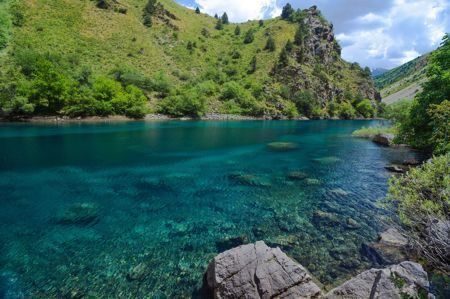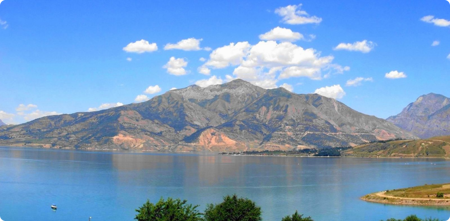The mausoleum of Khoja Daniyar (Saint Daniel) is one of the most famous places of worship in Samarkand. Muslims, Christians, and Jews treat him with equal respect. Daniyar, Daniel, and Daniel are the names of a single Saint in Muslim, Christian, and Jewish literature.
Samarkand historian Abu Tahirkhodja samarqandi (XVIII century) writes in his book “Samaria”: "Mazar Khodja Daniyara is located outside the city of Samarkand, at the bottom of the Northern wall of the settlement Afrasiab. The famous Siab river flows not far from the mausoleum. "Grave" grave of the Prophet Daniyar is called by commoners, but his grave is located in Mosul. It is said that this is the grave of one of the companions of qusam Ibn Abbas (a cousin of the Prophet Muhammad). May Allah have mercy on him! The grave is covered with stones from Zeravshan. It is said that Khoja Daniyar was very pious. On the side of Mazar's head, closer to the Siab river, there is also a spring of Khoja Daniyar. May Allah have mercy on him!".
So what is this person, the Prophet Daniel?
According to the biblical interpretation, Daniel in Hebrew means "judge God”, “my God is the judge". He was born in Jerusalem in 603 BC and descended from the line of kings David and Solomon. When Israel was captured by the king of Babylonia, Novukhudonosor, In 586 BC, Daniel was taken to Babylon (the modern territory of Iraq) along with other young men of noble origin. They began to study various Sciences, including astrology and the art of interpreting dreams. The most capable of the Jewish youth was Daniel. At the same time, he proved to be adamant in his religious beliefs. He even refused wine and meat food, obtaining permission to eat only vegetables in order to follow the precepts of religion. Therefore, the wisdom of Daniel is interpreted in the Bible as God's reward for piety. For a wise interpretation of one of the dreams, Novukhudonosor showered him with his favors, making him the closest person to himself.
At an advanced age, Daniel asked the king to let him go on vacation. After that, he moved to Susa (in present-day Iran), where he died and is buried in the Royal tomb. It is believed that the spirit of this prophet protects the city from all misfortunes and the remains of Daniel bring prosperity to the city – so there will never be poverty and hunger in the city.
According to legend, the great Amir Temur in his next seven-year campaign in Asia Minor (1397-1404) made a pilgrimage to the mausoleum of the Saint and decided that his capital Samarkand should also be rich and prosperous.
Some of the Saint's remains were sent to Samarkand with great honors. When the caravan of fifty camels approached the capital, they stopped on the Bank of the river Siab, where the mausoleum is now located. Here they decided to bury the remains, especially since this place was very similar to the burial in Susa. After the burial, a spring spring began to beat and residents of the city and surrounding areas have been using this water for many centuries, believing in its healing power.
The modern six-domed mausoleum (only five domes have survived at this time) was built in the early twentieth century by Samarkand masters, whose head was Mahmud-aksakal.
The domes of the mausoleum correspond to the main branches of the pistachio tree, which is more than 500 years old. It is noteworthy that the half-dried tree found new life in 1996, when Patriarch Alexy II of Moscow and All Russia consecrated the grave and the tree.
Inside the mausoleum, you can see an 18-meter grave.
In 2001, archaeological excavations were conducted on the territory of the complex. The remains of the mosque of the XIV century were discovered. The mosque, as scientists suggest, was a beam, the mihrab niche of which was directed towards Mecca.
Archaeological excavations are continuing and will further provide more extensive knowledge about the history of the mausoleum.









